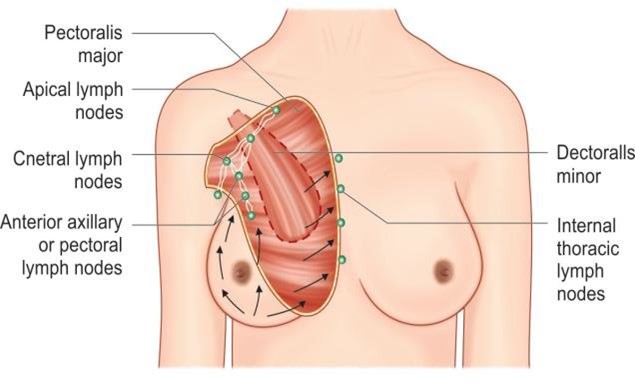A nurse is providing postpartum education about newborn feedings to a client who has recently given birth. Which of the following information should the nurse include about bottle feeding?
Feedings should be accompanied by nonnutritive sucking.
Feedings should be on demand.
Feedings should begin within 1 hr after birth.
Feedings may occur in clusters.
The Correct Answer is B
Choice A reason: Feedings should not be accompanied by nonnutritive sucking. Nonnutritive sucking is the act of sucking on a pacifier, finger, or other object without getting any nutrition. Nonnutritive sucking can interfere with the establishment of breastfeeding, cause nipple confusion, and reduce milk supply.
Choice B reason: Feedings should be on demand. On demand feeding means feeding the newborn whenever they show signs of hunger, such as rooting, sucking, or crying. On demand feeding helps the newborn regulate their appetite, meet their nutritional needs, and bond with their caregiver.
Choice C reason: Feedings should not begin within 1 hr after birth. This instruction is applicable for breastfeeding, not bottle feeding. Breastfeeding should begin within 1 hr after birth to initiate milk production, stimulate uterine contractions, and transfer colostrum to the newborn. Bottle feeding can be delayed until the newborn is stable and alert.
Choice D reason: Feedings may not occur in clusters. Cluster feeding means feeding the newborn more frequently and for longer periods of time during certain times of the day or night. Cluster feeding is common in breastfed newborns, especially during growth spurts or developmental leaps. Bottle fed newborns may not exhibit cluster feeding, as they tend to have more consistent and predictable feeding patterns.
Nursing Test Bank
Naxlex Comprehensive Predictor Exams
Related Questions
Correct Answer is ["58"]
Explanation
Step 1: Convert the weight from kilograms to pounds. 70 kg × 2.2 lbs/kg = 154 lbs Result at each step = 154 lbs
Step 2: Convert the height from meters to inches. 1.1 m × 39.37 inches/m = 43.307 inches Result at each step = 43.307 inches
Step 3: Convert the height from inches to feet. 43.307 inches ÷ 12 inches/foot = 3.609 feet Result at each step = 3.609 feet
Step 4: Calculate the BMI using the formula: BMI = weight (lbs) ÷ (height (inches))^2 × 703 BMI = 154 lbs ÷ (43.307 inches)^2 × 703 Result at each step = 154 lbs ÷ 1874.48 × 703 Result at each step = 0.0821 × 703 Result at each step = 57.7
Step 5: Round the BMI to the nearest whole number. Result at each step = 58
The client’s Body Mass Index (BMI) is 58.
Correct Answer is A
Explanation
Choice A reason: Alternating the first breast that is offered to the baby with each feeding is a good practice for breastfeeding because it can ensure equal stimulation and drainage of both breasts, which can prevent engorgement, mastitis, or low milk supply. Alternating breasts can also provide the baby with both foremilk and hindmilk, which have different compositions and benefits.
Choice B reason: Storing breast milk in the refrigerator up to 48 hours is not a good practice for breastfeeding because it can reduce the quality and safety of the milk. Breast milk should be stored in the refrigerator for no longer than 24 hours or in the freezer for no longer than 6 months. Breast milk should also be stored in clean, sterile containers and labeled with the date and time of expression.
Choice C reason: Nursing the baby once every 4 hours is not a good practice for breastfeeding because it can decrease the milk production and supply, which can affect the growth and development of the baby. Breastfeeding should be done on demand or at least every 2 to 3 hours during the day and every 3 to 4 hours at night. Breastfeeding should also last for at least 10 to 15 minutes per breast or until the baby is satisfied.
Choice D reason: Offering the baby water between feedings is not a good practice for breastfeeding because it can interfere with the baby's appetite and intake of breast milk, which can cause dehydration, malnutrition, or failure to thrive. Breast milk contains enough water and nutrients to meet the baby's needs for the first six months of life. Water should be avoided or limited until the baby starts solid foods.

Whether you are a student looking to ace your exams or a practicing nurse seeking to enhance your expertise , our nursing education contents will empower you with the confidence and competence to make a difference in the lives of patients and become a respected leader in the healthcare field.
Visit Naxlex, invest in your future and unlock endless possibilities with our unparalleled nursing education contents today
Report Wrong Answer on the Current Question
Do you disagree with the answer? If yes, what is your expected answer? Explain.
Kindly be descriptive with the issue you are facing.
